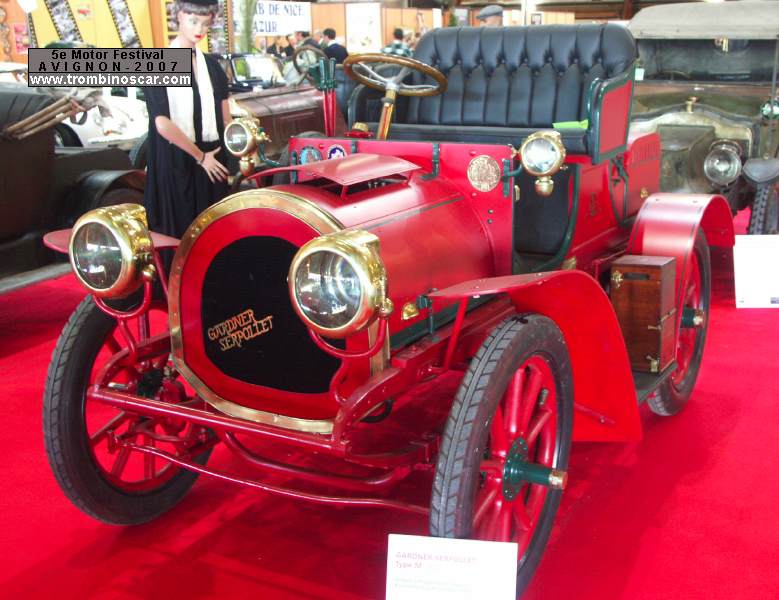|
Condensed from a report to the Third International Automobile Congress, held at Milan, 24th-29th May 1906. Supplied by Thos. Hindle. By Leon Serpollet (Courtesy of Light Steam Power, March-April, 1971). Fuels Solid Fuels, either coal or coke, are employed with nearly all tank boilers, so that, on account of the weight of the generators themselves, the bulk of the supplies and the nature of the fuel, they are limited to heavy commercial vehicles, which generally are operated on designated routes and have fixed points of supply. There remain the liquid fuels, gasoline, alcohol, kerosene, and heavy oil. Gasoline is employed in the burners of the Stanley and White generators. It is a fuel easy to burn; it vapourises at a low temperature, and, being refined, leaves but very little carbon deposit in the part of the burner where it is vapourised. Its disadvantages are its relatively higher prices than kerosene and its great inflammability. Denatured alcohol cannot be used as a fuel, except for experimental purposes; for, although easy to burn, its price and its low fuel value make it an unsuitable combustible. Alcohol, mixed with an equal amount of gasoline, also burns well, but is inferior to gasoline as a fuel; it is also very inflammable. Kerosene is a proper fuel for touring purposes in nearly all countries. It is employed in connection with Serpollet, Chaboche, Miesse, and Weyher and Richmond generators, by means of different burners, but all based on the same principle, which consists in causing the kerosene to pass through a coil heated to a temperature suitable for vapourising it. The kerosene gas, which is distributed to one or more Bunsen burners, carries with it the aur necessary for combustion. The rate of operation of these burners being very variable, they must be designed so as to allow of passing instantly from the position of just keeping alight to that of maximum intensity, and vice versa. Finally we come to the heavy oils, which, owing to their low price in nearly all countries, mark the connecting link between solid and liquid fuels, and will undoutably prove the fuel of the future for steam automobiles. This fuel has been experimented with for a number of years already; but the difficulties encountered with the present vapourising burners have so far rendered its use impracticable. In fact, all these products possess the disadvantage of being vary variable in their composition, even when derived from the same firm. They always contain in greater or smaller quantities elements which do not distil, which remain in the channels of the burner, and form deposits of coke at the hottest points of the burner. The burners are constructed in such a manner as to allow of being quickly taken apart and cleaned; but on account of the varying composition of the product, the more or less frequent change in the rate of combustion, the number of ignitions and extinctions, and the lengths of the periods of low fire, the periods of operation without cleaning vary so greatly as not to five all the security desirable. The period of operation of a burner without cleaning does not admit of continuous service for more than ten to twelve hours. As there are no practical applications of this fuel for automobile purposes, I shall be obliged to submit some results which have been obtained by the Serpollet firm. The considerations outlined above have led us to produce a rational vapoursing device which perimuts of burning any fuel desired. The feed of the fuel being secured by means of a pump of variable delivery, we have with this pump an air pump which has a proportional delivery, and consequently furnishes the exact amount of operation. This volume of air, by means of a common jet is discharged into a combustion chamber at the same time as the oil, and the jet of air completely pulverises the fuel, so that we obtain a completely homogenous combustible mixture which, by aid of a priming effect obtained by the burning of a small quantity of alcohol, may be ignited just as easily as a gas-jet, and instantly brought to its maximum intenisty. This arrangement presents very important advantages. The first is the doing away with the apparatus known as the burner. The method of mixing fuel and air does away with the need for any attention as to the adjustment of proportions whatever be the speed of the pumps or of the vehicle. The wind has absolutely no effect on this fire, as it burns in a closed chamber. Besides, draught chimneys are done away with, as the products of combustion are discharged under pressure through a tube of small diameter, at any convenient point of the vehicle, and in any direction desired. Owing to the perfect proportions of the mixture, the efficiency is a maximum at all rates of combustion. The pressure in a generator fitted with a burner of this type may be raised to its normal value in less than two minutes. Boiler feed-water Generally speaking, automobile steam boilers are supplied with feed-water by means of an automatic pump, either with a fixed stroke and a bypass to the tank, or with a variable stroke. A steam injector is never employed, except with tank boilers. Several firms have long since adopted the so-called "small horse" (donkey pump i.e direct acting steam pump) feeding arrangement. A Serpollet car took part in the Paris-Berlin race in 1901, fed by a Thirion "small horse" operating the two pumps for water and kerosene respectively. We shall not discuss the methods of feed employed with tank generators, which, fitted with a pressure-gauge, safety valve, etc., are always operated by professional mechanics. The feed with generators employing a liquid combustible is generally automatic; that is to say on certain cars, such as the Stanley and White; there is provided an apparatus designed to regulate the fire in accordance with the temperature or pressure of the steam, but the feeds of water and fuel are independent of each other. In the Serpollet car since 1888, and in the Friedmann car since a more recent date, fuel and water are fed proportionately- that is to say, the fuel and water pumps are interconnected mechanically and have always a proportional dscharge, whatever may be the speed of the parts driving them. In the Serpollet 1906 model an air-pump has been added to these two pumps, designed to furnish the air for pulversing the heavy oil or kerosene and for burning it. A 1906 Gardner-Serpollet, image courtesy of: http://www.trombinoscar.com/veterans/gardner0501.html
0 Comments
Leave a Reply. |
For instructions on how to add to our community's blog post, please visit our Get Involved page by clicking on the link above!
Archives
November 2022
Categories
All
|
|
|
Steam Car Network functions as a resource for all steam car and steam bike enthusiasts. The website is constantly updated with articles, events, and informative posts to keep the community alive and growing. Feel free to contact us if you have any questions or concerns at the email address below and we will promptly reply.
[email protected] |



 RSS Feed
RSS Feed
